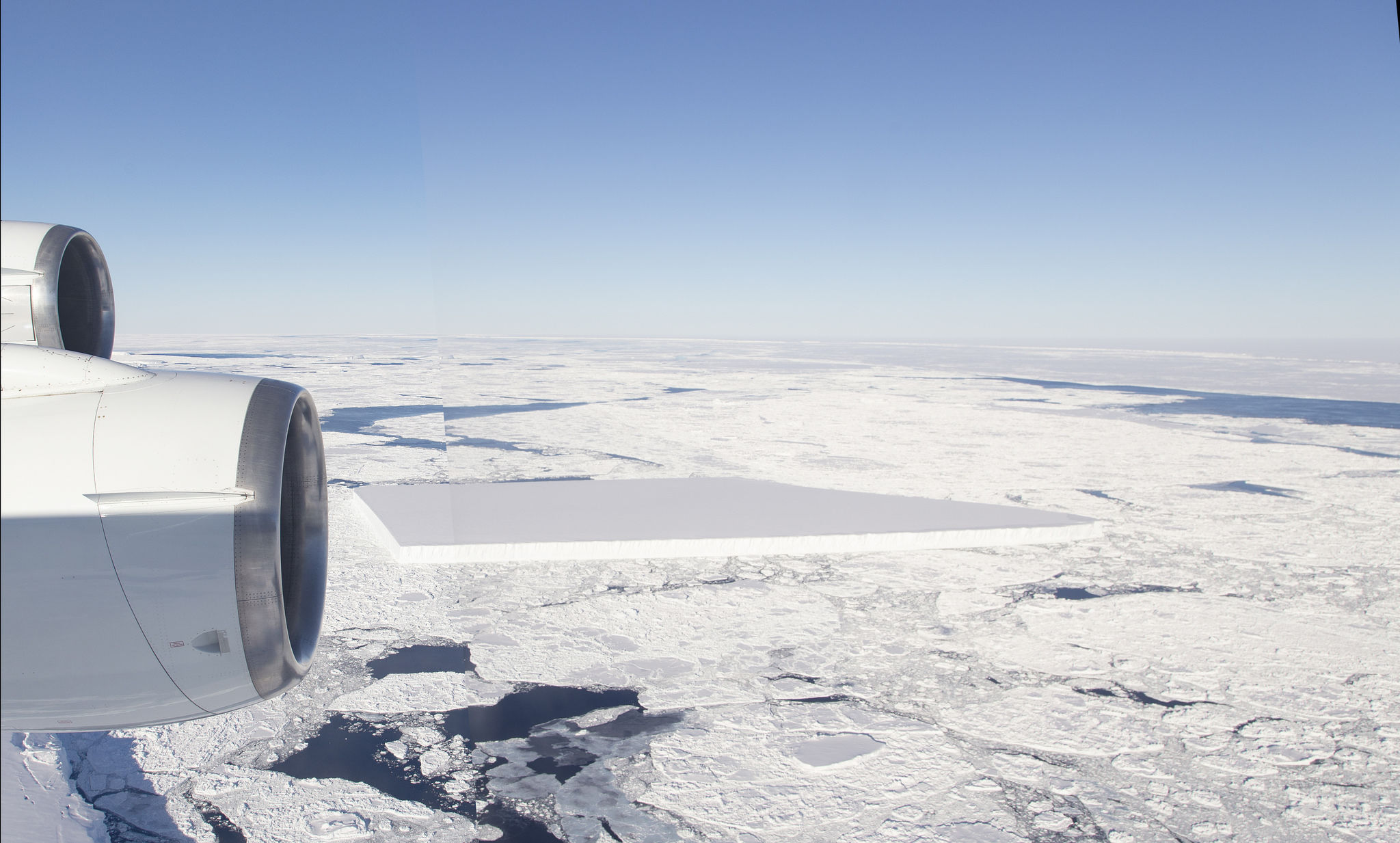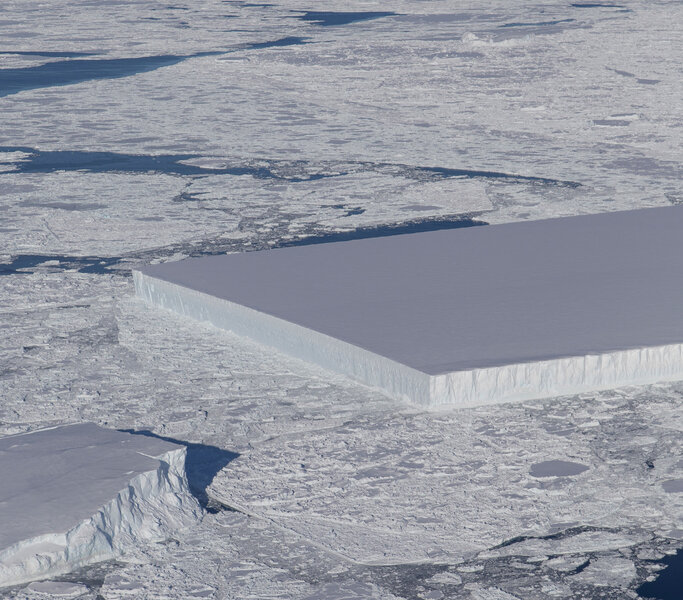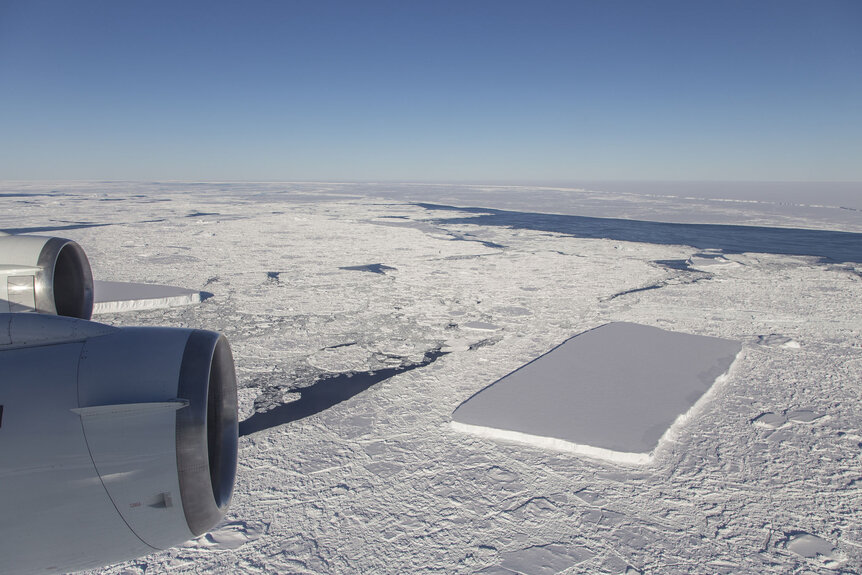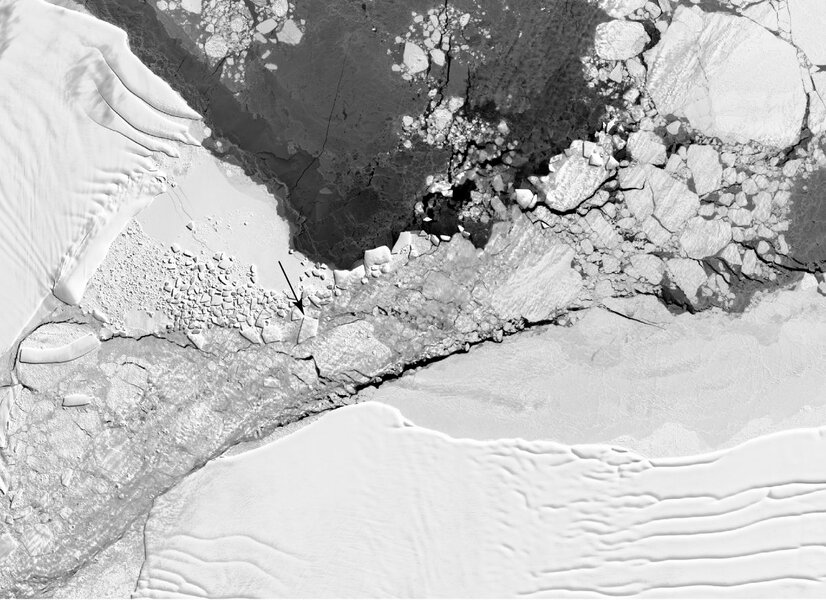Create a free profile to get unlimited access to exclusive videos, sweepstakes, and more!
My God… It's full of ice.

I remember back when I was in grade school, maybe fifth or sixth grade, and I had a terrific science teacher. She encouraged us to explore, to question, to investigate. I remember a lot of wonderful things she told us, but one thing in particular came back to me recently: “Nature never makes a straight line.”
She meant that things like rocks and such were always crooked or curved or kinked, and only humans made lines that were straight.
I get her point… but what she said really isn’t right. Nature makes straight lines all the time. Sometimes even in places you really wouldn’t expect them… like, say, an iceberg.
That photo has been making the rounds, and I have to say it’s pretty <puts on sunglasses> cool. It shows lots of flat-topped icebergs (called tabular bergs) off the edge of the far huger Larson C ice shelf in Antarctica. This is a vast sheet of ice hanging off the Antarctic Peninsula, that long tail-like extension from the continent that points north and then curves to the east; Larsen C is tucked into the concave part of one of those curves. It floats on the water there, covering more than 40,000 square kilometers. In 2017 it calved, with a huge chunk called A68 breaking off. That was about 5,800 sq. km in total, well over 150 km long.
Smaller ones break off all the time; it’s a natural cycle of ice shearing off and reaccumulating. Most of them are irregular in shape. However, despite my grade school teacher’s proclamation, straight edges are common. Water ice is a crystal, and can fracture along straight lines due to the way water molecules align when they freeze (and lots of other crystals have straight edges and even flat sides, including, for example, table salt).
The photo shows such a straight-edged berg, likely a remnant from A68 breaking up a bit, and what’s unusual is how many straight edges there are and that they’re perpendicular. Normally you get one edge like that, not two or more. This one is about a kilometer long, and looks like a rectangle in some photos, but is actually a trapezoid, a quadrilateral with a single pair of parallel sides. One of the short sides is actually at an angle to those two. Another iceberg nearby is more nearly a rectangle, too. It’s not clear how high they reach above the sea surface, but it looks like roughly 50 meters to me. Maybe more.
I’ll note the sides aren’t actually all that straight. They are on the big scale, but when you look closely you can see lots of wiggles. The edges are pretty clean, though, indicating they’re fresh, and therefore probably calved pretty recently. Over time melting, erosion, and collisions with other bergs will roughen the edges up.
These tabular bergs were seen by NASA’s Operation IceBridge, a survey of the Earth’s ice at both poles done by airplanes. It’s called IceBridge because it bridges the gap of surveys done by satellite; ICESat de-orbited in 2003, and ICESat-2 launched just last month. These surveys are critical in understanding how the ice behaves, including under the effects of global warming.
Still, when I saw that iceberg floating there, I wasn’t thinking any of this. I was wondering how that monolith got from the Moon (or maybe Jupiter) to Antarctica… and if the plane flew past it because they wanted to attempt no landings there.
P.S. As for the title of this article, come on. I can’t do all the work for you.






























